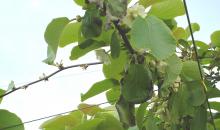Pseudomonas syringae pv. actinidiae(PSDMAK)
Photos
All photos included on this page can only be used for educational purposes.
For publication in journals, books or magazines, permission should be obtained from the original photographers with a copy to EPPO.
For publication in journals, books or magazines, permission should be obtained from the original photographers with a copy to EPPO.

Brown spots surrounded by yellow haloes are visible in spring on kiwifruit leaves.
Courtesy: Plant Protection Service of Emilia-Romagna region (IT).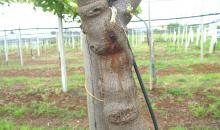
In spring, vine branches and trunks affected by Pseudomonas syringae pv. actinidiae show cankers which usually ooze red exudates.
Courtesy: Plant Protection Service of Emilia-Romagna region (IT).
Browning of tissue under the cortex of vine branches (Actinidia chinensis).
Courtesy: Plant Protection Service of Emilia-Romagna region (IT).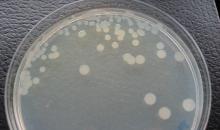
Morphology of colonies grown for 5 days on King’s medium B, supplemented with antibiotics
Courtesy: E. Stefani, Dept. of Life Sciences, Reggio Emilia (IT)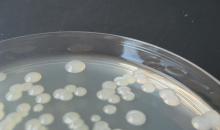
Morphology of colonies grown for 5 days on NSA medium, supplemented with antibiotics
Courtesy: E. Stefani, Dept. of Life Sciences, Reggio Emilia (IT)
Bacterial exudate oozing from infected actinidia twig
Courtesy: Riccardo Bugiani (Plant Protection Service - Emilia-Romagna Region - IT)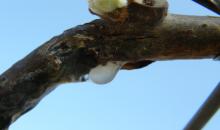
Bacterial ooze due to infection on kiwiplant
Courtesy: Riccardo Bugiani (Plant Protection Service - Emilia-Romagna Region - IT)

